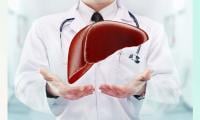Brain-eating bug claims fourth victim in city
A woman in Karachi died of meningitis caused by the dreaded microorganism Naegleria fowleri, raising the year’s total death toll due to the brain-eating bug to four in the city, it was learnt on Tuesday.
“Amina Saleem, 48, and a resident of the Karimabad area of District Central, died this Sunday at a private hospital due to meningitis caused by N fowleri,” the Sindh government’s focal person for Naegleria fowleri, Dr Zafar Mehdi, told The News.
He said the woman had been suffering from extreme headaches, nausea and drowsiness for some days, adding that she was taken to the Patel Hospital in Gulshan-e-Iqbal on Saturday when her condition worsened. “Within 24 hours of her admission to the hospital, she succumbed to the deadly infection.”
According to health officials, N fowleri has killed 46 people across Sindh since 2011. Meanwhile, a recent study by some Pakistani experts at the University of Dammam in Saudi Arabia and the University of Karachi found that between 2008 and 2015, 110 people in Sindh died due to primary amoebic meningoencephalitis (PAM) caused by N fowleri.
Published in the Archives of Pharmacy Practices last year, the study found that the highest number of cases was reported in 2012 when 22 people in Pakistan died of the water-borne infection.
The researchers said majority of the N fowleri deaths in the country between 2008 and 2015 occurred in the month of July. The mean temperature of the month was between 35°C and 39°C, while majority of the cases were reported in Karachi.
Saudi Arabia-based Pakistani specialists said that no individual who contracted the disease was able to survive, adding that adults between the ages of 26 and 45 years were the most affected. All of the deaths occurred in the Muslim community, concluded the study.
“In the beginning, PAM-related deaths occurred mainly in males,” says the study. “However, female deaths have also been reported recently. Cross tabulating the variable of year with patient age group revealed that individuals from all ages ... were reported dead due to the pathogen.”
The study by foreign experts further revealed that chlorination of the municipality water supply in Karachi was below the World Health Organisation recommended level of 0.5 parts per million (ppm).
Data of 913 water samples taken from different parts of the city in 2012 reported 201 water samples to have chlorination below 0.5ppm. In 2014, another 2,094 water samples were drawn across the city and reported low chlorination. The subsequent year also reported similar results.
On the other hand, leading water technologist and expert Dr Ahsan Siddiqui said that due to deteriorating water supply lines in Karachi and other issues, chlorinated water does not reach the consumers.
He advised the people to clean their underground and overhead water tanks as well as to use liquid bleach regularly. “It is found that N fowleri remains present in the layer of mud in the water tanks ... and whenever it finds favourable temperatures, it activates.”
He said 10 drops of liquid bleach killed all the pathogens and microorganisms in one cubic feet of water containing 28 litres, reiterating the need for regular cleaning of underground and overhead water tanks to get rid of N fowleri colonies.
-
 Philippines Blocks Elon Musk’s Grok AI
Philippines Blocks Elon Musk’s Grok AI -
 Jennifer Lawrence Blames Internet For Losing Sharon Tate Role
Jennifer Lawrence Blames Internet For Losing Sharon Tate Role -
 DeepMind, Google CEOs Sync Daily To Accelerate AI Race Against OpenAI
DeepMind, Google CEOs Sync Daily To Accelerate AI Race Against OpenAI -
 Japan Launches Probe Into 'Grok AI' Following Global Scrutiny Over 'inappropriate' Content
Japan Launches Probe Into 'Grok AI' Following Global Scrutiny Over 'inappropriate' Content -
 Prince Harry All Set To Return To Britain Next Week?
Prince Harry All Set To Return To Britain Next Week? -
 Is Princess Charlotte Becoming Most Confident Young Royal?
Is Princess Charlotte Becoming Most Confident Young Royal? -
 ‘Stranger Things’ Star David Harbour Speaks Up About ‘psychotherapy’
‘Stranger Things’ Star David Harbour Speaks Up About ‘psychotherapy’ -
 Jennifer Love Hewitt Talks About Scary 9-1-1 Episode
Jennifer Love Hewitt Talks About Scary 9-1-1 Episode -
 Kate Middleton Ditches Palace Life For Where She 'truly Relaxes'
Kate Middleton Ditches Palace Life For Where She 'truly Relaxes' -
 Pixel Watch May Soon Warn You If You Leave It Behind
Pixel Watch May Soon Warn You If You Leave It Behind -
 Serious Liver Scarring Shows Potential To Be Reversed With Latest Drug
Serious Liver Scarring Shows Potential To Be Reversed With Latest Drug -
 Elon Musk Backs Donald Trump To Invoke Insurrection Act Amid Minnesota Protests
Elon Musk Backs Donald Trump To Invoke Insurrection Act Amid Minnesota Protests -
 Scientists Unravel Mystery Of James Webb’s ‘little Red Dots’ In Deep Space
Scientists Unravel Mystery Of James Webb’s ‘little Red Dots’ In Deep Space -
 Nano Banana Explained: How Google’s AI Got Its Name
Nano Banana Explained: How Google’s AI Got Its Name -
 Fire Causes Power Outage On Tokyo Train Lines, Thousands Stranded As ‘operations Halted’
Fire Causes Power Outage On Tokyo Train Lines, Thousands Stranded As ‘operations Halted’ -
 YouTube, BBC To Ink Landmark Deal To Launch Exclusive Bespoke Shows
YouTube, BBC To Ink Landmark Deal To Launch Exclusive Bespoke Shows



